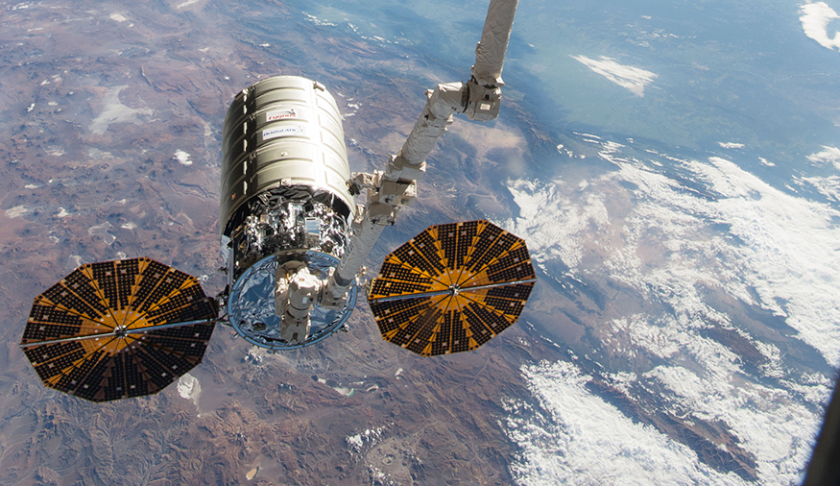
The NG-11 Cygnus spacecraft, named in honour of Apollo 1 astronaut and space visionary Roger Chaffee, left the ISS after a 109-day stay at the station.
While docked at the orbiting laboratory, astronauts unloaded approximately 3,175 kilograms of vital supplies and scientific equipment. They then loaded approximately 2,404 kilograms of disposable cargo onto Cygnus for removal from the station.
The next phase of the mission will demonstrate enhanced capabilities Cygnus offers that go well beyond cargo supply and disposal. The spacecraft will deploy multiple CubeSats via the Slingshot CubeSat Deployer System installed by NASA astronauts prior to unberthing from the ISS, and the NanoRacks external CubeSat deployer.
Cygnus will then remain in orbit to coincide with a second Cygnus spacecraft scheduled for launch in October to the ISS – its first extended duration flight to demonstrate its capability to fly two Cygnus vehicles simultaneously and support hosted payloads for longer periods of time.
This newest innovation reinforces Cygnus’ ability to serve a robust and growing commercial economy in low-Earth orbit.
Northrop Grumman is a leading global security company providing innovative systems, products and solutions in autonomous systems, cyber, C4ISR, space, strike, and logistics and modernisation to customers worldwide.
Receive the latest developments and updates on Australia’s space industry direct to your inbox. Subscribe today to Space Connect here.









